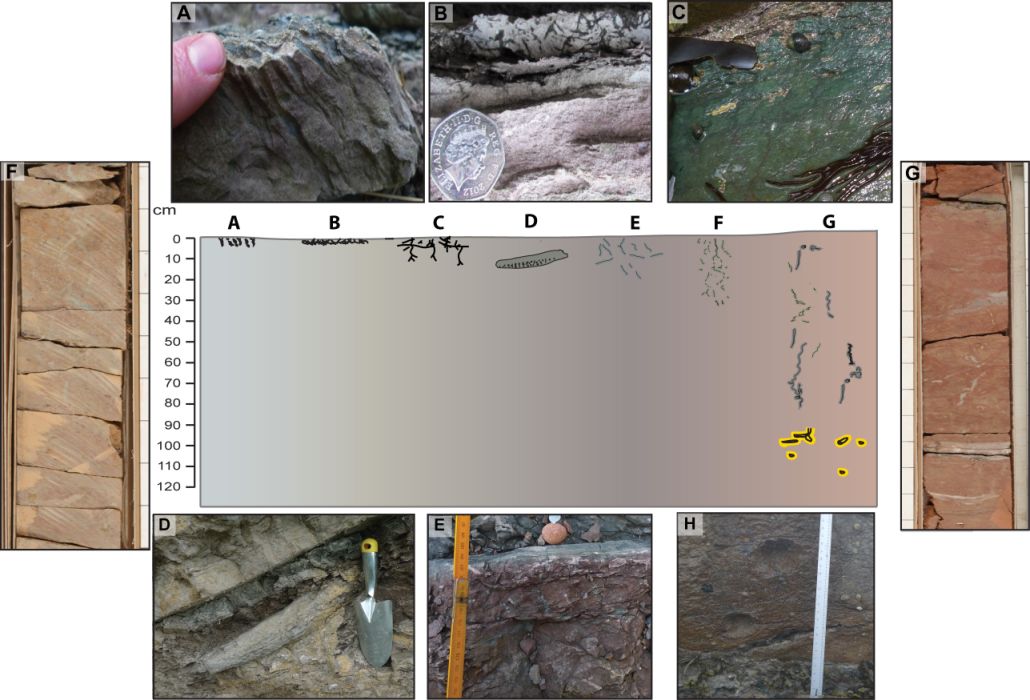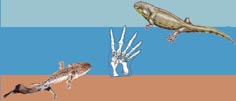Palaeogeography, Palaeoclimatology, Palaeoecology: The terrestrial landscapes of tetrapod evolution in earliest Carboniferous seasonal wetlands of SE Scotland
Tim Kearsey, Carys Bennett, David Millward, Sarah Davies, Melanie Leng, John Marshall
In June, 2016, team members from the British Geological Survey and the Universities of Leicester and Southampton published a paper in the journal Palaeogeography, Palaeoclimatology, Palaeoecology and we present here a summary aimed at the non-specialist.
The Lower Carboniferous (Tournaisian) Ballagan Formation in south-east Scotland yields tetrapod fossils that provide fresh insights into the critical period when these animals first moved from water onto land. The key to understanding what cause this change to happen is the palaeoenvironments in which they lived. Palaeosols (fossilised soils) found throughout the Ballagan Formation, provide a unique insight into the early Carboniferous habitats and climate.
More than 200 separate palaeosols are described from three sections through the formation, from two field sites and the borehole. Roots were abundant through all the palaeosols, from shallow mats and thin hair-like traces to sporadic thicker root traces typical of arborescent lycopods.
We discovered that the landscape was covered with lots of different habitats, including marsh wetlands, small stands of trees and areas of low vegetation. The overall landscape would have looked similar to the Florida Everglades of the USA. Fossilised root traces suggest that there was a wide range of different types of vegetation, from small ferns to trees.
From the geochemistry of the palaeosols we found that the mean annual rainfall was 1000 –1500 mm per year in the Tournaisian. However, this rainfall was strongly seasonal as there is evidence of deep cracks in the soils, which suggest a pronounced dry season. This confirms what others have found that at the time the tetrapods were living, southern Scotland had a monsoonal tropical climate. When it rained, large areas got flooded and may have presented new habitats for the tetrapods. However, many of these would have dried out in the dry season meaning the ability to live both on land and in the water would be an advantage.

A figure from the paper documenting different types of roots and rooting depths.
© Copyright 2015 Tim Kearsey.

